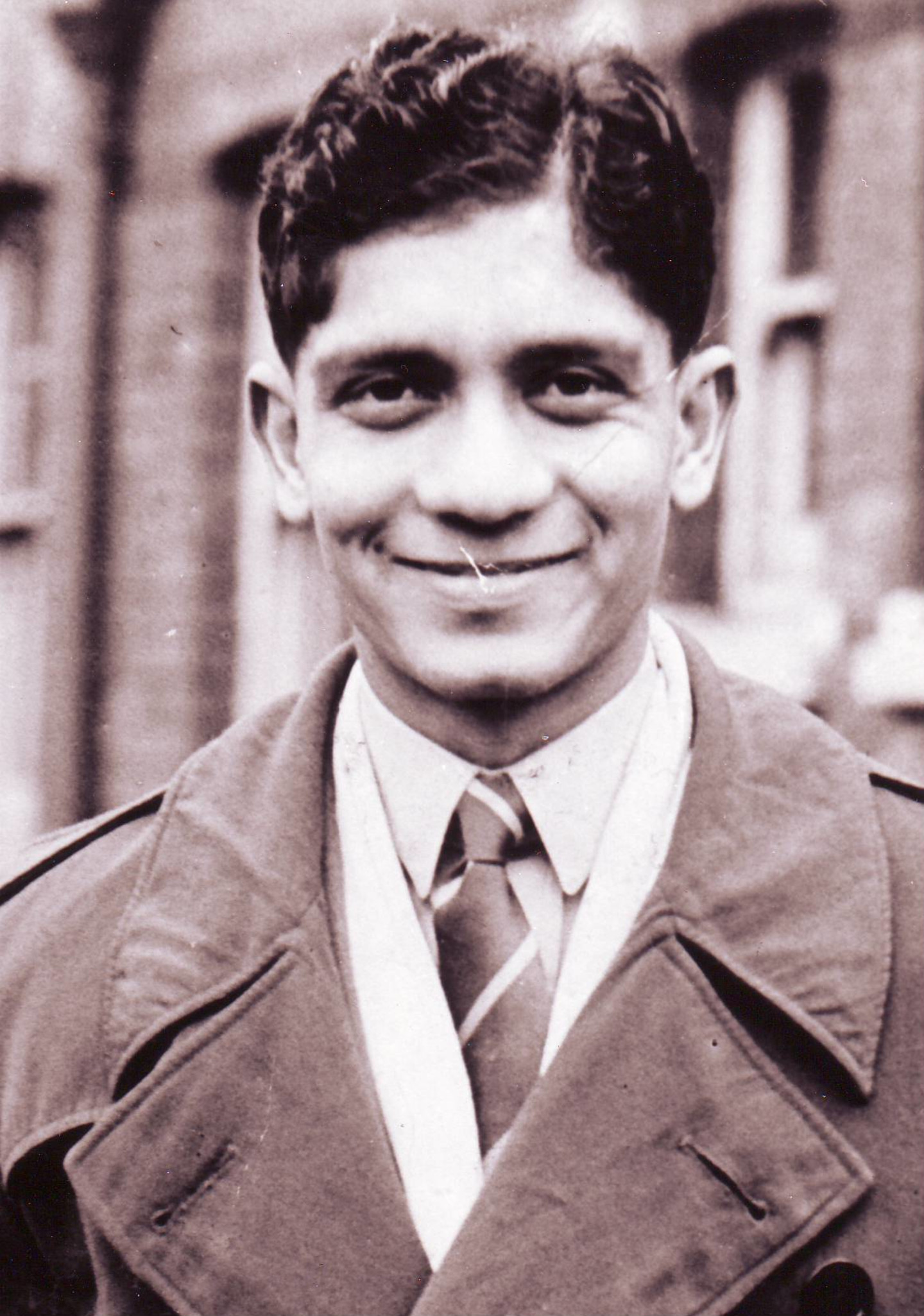Those who watched Notts cricket through the 1950s have an indelible memory of two leg spinners bowling in tandem and, in the process, baffling the best batsmen on the county circuit. One was the seasoned Australian Test cricketer, Bruce Dooland, the other a spindly lad of less than medium height with an unpronounceable name – Gamini Goonesena. However, when one combs carefully through the records, it’s surprising how relatively few matches they played together. Dooland scarely missed a game in five seasons (1953-57). Goonesena’s career stats show he played for the county from 1952 to 1964, but in four of the five seasons Dooland operated, Goonesena was resident at Cambridge University and missed half the county programme – in fact in 1956 he played a mere five Championship games.
Whilst Dooland came to England having been rejected by the Australian Test selectors and was determined on a career in professional cricket, Goonesena’s cricketing path was perhaps the most complex of all Notts players. Born in Colombo on 16 February 1931, he was educated at the prestigious Royal College, Colombo (Ceylon’s equivalent of Eton or Harrow). In the college XI for three seasons 1946/7 to 1948/9, he actually made his First-Class debut for Ceylon (v Holkar) aged 17 in 1947/8. Leaving school he fancied a career as a pilot and gained entry to the RAF College at Cranwell in 1950. The College had a very strong cricket tradition in the 1950s with a regular annual fixture against Notts Club & Ground. It was not long before the College realized that Goonesena was not suitable material for the RAF, or a flying career in general, but his cricketing potential was obvious and Notts approached him.
He made his First-Class debut in England for Tom Pearce’s XI v Essex at Chelmsford in May 1952, taking eight wickets, and later that season made his Notts debut versus the Indians at Trent Bridge on 5 July. Gooensena qualified for championship action for Notts in 1953. He was immediately drafted into the Notts First XI and took 47 wickets, as well as making 379 runs in 21 appearances that initial season. He then applied to and entered Cambridge and had an outstanding second season, his figures for Notts and Cambridge combined produced 92 wickets @23.08, plus 664 runs @22.13.
In 1955 he completed the “Double” with 134 wickets and 1,380 runs. That winter he toured the West Indies with E W Swanton’s team, then in 1956 illness reduced his total appearances. Also in 1956, he captained Ceylon v India, taking seven wickets and top scoring with 48 (Ceylon were of course not of Test Match status at that time). Elected captain of Cambridge – the first Asian cricketer to hold that role - for 1957 he again performed the ‘Double’ with 110 wickets and 1,156 runs. This included a career best 211 in the University match at Lord’s, the highest individual score for Cambridge in the history of that illustrious fixture.
For only the second time he had in 1958 a full season at Trent Bridge, taking 68 wickets and scoring 592 runs. In 1959 he left cricket, but the following year found him in Canberra as attache to the Sri Lankan High Commission. In 1960/1 and again in 1963/4 he played briefly for New South Wales, substituting for Richie Benaud when the latter was on Test duty. Back in England in 1964, Goonesena made a re-appearance at Trent Bridge and in nine matches took 22 wickets, including two five-fors.
In his truncated Notts career of 94 first-class matches he took 299 wickets @25.06, with a best of 7-63 (13-82 in match) v Leicestershire at Grace Road in 1958, and hit 2,464 runs @19.10 with one century, 107 not out v Northants at Trent Bridge in 1955. In 1967/8 he toured the sub-continent with an International XI, then finally in 1968 bowed out of First-Class cricket for Free Foresters v Oxford University, returning figures of 5-38 and 5-49.. At this time he was Deputy Commissioner for the Ceylon Tea Board in London.
Going back to Sri Lanka, he helped advise the Sri Lankan Board on the coaching of spin bowlers. In 1965 he was appointed as Ceylon's (the country had still to change name) representative to the ICC International Cricket Conference and subsequently managed the Sri Lankan Test side on a tour of India. He also played club cricket for Waverley District Cricket Club (now Eastern Suburbs District Cricket Club) in Sydney in the 1970s. During the 1990s he became President of Colts CC, one of the oldest clubs on the island, and during this time he also worked as a Test Match commentator for Sri Lankan radio and television. He also joined the BBC Test Match Special commentary team when Sri Lanka toured England in 1984 and 1988.
Finally, he retired to Australia and died in Canberra aged 80, on 1 August 2011.
April 2020
Nottinghamshire First-Class Number: 396
See Gamini Goonasena's career stats here
